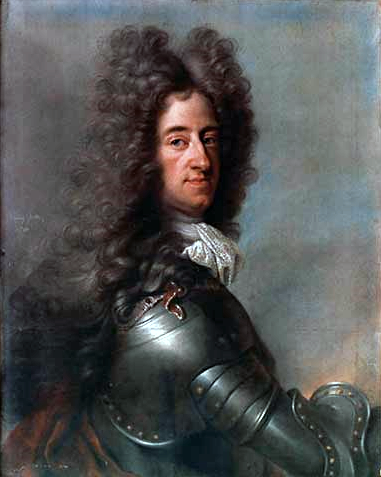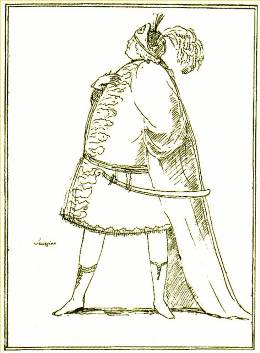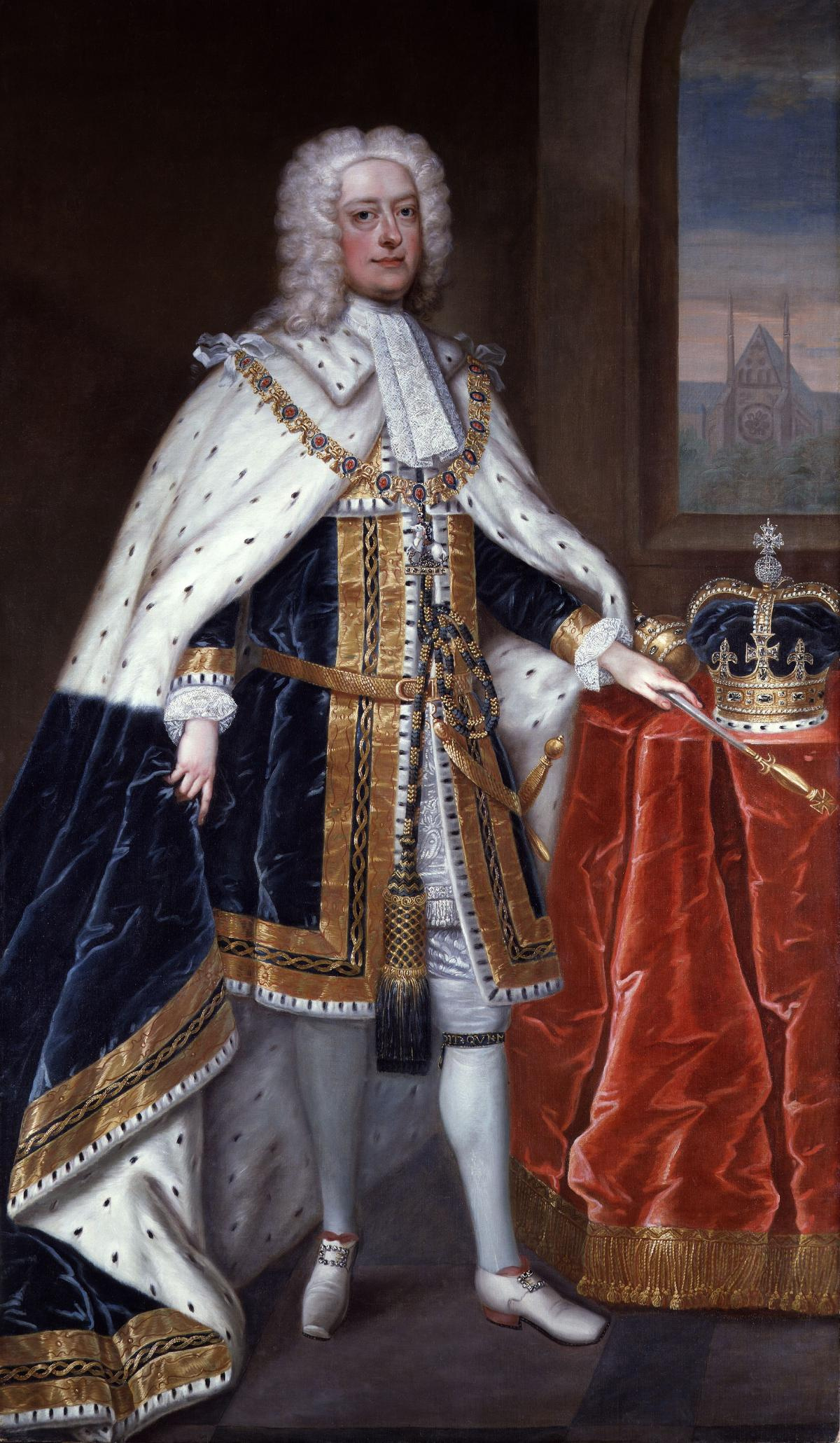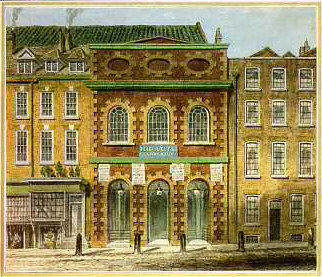|
Faustina Bordoni
Faustina Bordoni (30 March 1697 – 4 November 1781) was an Italian mezzo-soprano. In Hamburg, Germany, the Johann Adolph Hasse Museum is dedicated to her husband and partly to Bordoni. Early career She was born in Venice and brought up under the protection of the aristocratic brother composers Alessandro and Benedetto Marcello. Her singing teacher was another composer, Michelangelo Gasparini. For many years in the service of the Elector Palatine, she made her operatic debut at Venice in 1716 in Carlo Francesco Pollarolo's ''Ariodante'', singing in her home city until 1725 in operas by Albinoni, the Gasparini brothers, Giacomelli, Leonardo Leo, Giuseppe Maria Orlandini, the Pollarolos, father and son, and Leonardo Vinci, amongst others. In 1718 and 1719 in Venice she sang alongside Francesca Cuzzoni, later to become her great rival. During this period she also performed several times at Reggio nell'Emilia, Naples and Parma, and at least once in Milan, Modena and Florence. Af ... [...More Info...] [...Related Items...] OR: [Wikipedia] [Google] [Baidu] |
Faustina Bordoni By Nazari
Faustina may refer to: People Saints * Faustina Kowalska (1905–1938), Polish mystic, "Secretary of Divine Mercy" * Saint Faustina and Saint Liberata of Como, 6th-century Italian nuns Women from the Nerva–Antonine dynasty * Rupilia Faustina, a daughter of Vitellia Galeria and the consul Lucius Scribonius Libo Rupilius Frugi Bonus * Faustina the Elder (died c. 140), Annia Galeria Faustina Major, daughter of Rupilia Faustina and Marcus Annius Verus; wife of Emperor Antoninus Pius * Faustina the Younger (2nd century – 175), Annia Galeria Faustina Minor, daughter of Faustina the Elder and Antoninus Pius; wife of Emperor Marcus Aurelius * Annia Cornificia Faustina (123–152), cousin of Faustina to Younger and sister to Marcus Aurelius * Annia Fundania Faustina (died 192), cousin of Faustina the Younger and Marcus Aurelius * Ummidia Cornificia Faustina (141–182), daughter of Annia Cornificia Faustina and niece of Marcus Aurelius * Vitrasia Faustina (died c. 180), daughter of Ann ... [...More Info...] [...Related Items...] OR: [Wikipedia] [Google] [Baidu] |
Pietro Torri
Pietro Torri (c. 1665 or earlier, in Peschiera del Garda_Pietro_Torri,_Neue_Hofkapelle_München,_Christoph_Hammer_(2)_–_Le_Triomphe_de_la_Paixat_Christoph_Hammer">_Pietro_Torri,_Neue_Hofkapelle_München,_Christoph_Hammer_(2)_–_Le_Triomphe_de_la_Paixat_Discogs">Christoph_Hammer_(2)_–_Le_Triomphe_de_la_Paix">Christoph_Hammer">_Pietro_Torri,_Neue_Hofkapelle_München,_Christoph_Hammer_(2)_–_Le_Triomphe_de_la_Paixat_Discogs_website._–_6_July_1737,_in_Munich)_was_an_Italian_Baroque_music.html" "title="Discogs.html" ;"title="Christoph Hammer (2) – Le Triomphe de la Paix">Christoph Hammer"> Pietro Torri, Neue Hofkapelle München, Christoph Hammer (2) – Le Triomphe de la Paixat Discogs">Christoph Hammer (2) – Le Triomphe de la Paix">Christoph Hammer"> Pietro Torri, Neue Hofkapelle München, Christoph Hammer (2) – Le Triomphe de la Paixat Discogs website. – 6 July 1737, in Munich) was an Italian Baroque music">Baroque composer. Life From 1684 to 1688, Torri served as th ... [...More Info...] [...Related Items...] OR: [Wikipedia] [Google] [Baidu] |
Billingsgate
Billingsgate is one of the 25 Wards of the City of London. This small City Ward is situated on the north bank of the River Thames between London Bridge and Tower Bridge in the south-east of the Square Mile. The modern Ward extends south to the Thames, west to St Mary-at-Hill, Lovat Lane and Rood Lane, north to Fenchurch Street and Dunster Court, and east to Mark Lane, London, Mark Lane and St Dunstan-in-the-East, St Dunstan's Hill. History Legendary origin Billingsgate's most ancient historical reference is as a Watergate (architecture), water gate to the city of Trinovantum (the name given to London in medieval British legend), as mentioned in the ''Historia Regum Britanniae'' (Eng: ''History of the Kings of Britain'') written 1136 by Geoffrey of Monmouth. This work describes how Belinus, a legendary king of Britain said to have held the throne from about 390 BC, erected London's first fortified water gate: Historical origin Originally known as ''Blynesgate'' and ''Byllynsg ... [...More Info...] [...Related Items...] OR: [Wikipedia] [Google] [Baidu] |
John Arbuthnot
John Arbuthnot FRS (''baptised'' 29 April 1667 – 27 February 1735), often known simply as Dr Arbuthnot, was a Scottish physician, satirist and polymath in London. He is best remembered for his contributions to mathematics, his membership in the Scriblerus Club (where he inspired both Jonathan Swift's ''Gulliver's Travels'' book III and Alexander Pope's ''Peri Bathous, Or the Art of Sinking in Poetry'', ''Memoirs of Martin Scriblerus,'' and possibly ''The Dunciad''), and for inventing the figure of John Bull. Biography In his mid-life, Arbuthnot, complaining of the work of Edmund Curll, among others, who commissioned and invented a biography as soon as an author died, said, "Biography is one of the new terrors of death," and so a biography of Arbuthnot is made difficult by his own reluctance to leave records. Alexander Pope noted to Joseph Spence that Arbuthnot allowed his infant children to play with, and even burn, his writings. Throughout his professional life, Arbu ... [...More Info...] [...Related Items...] OR: [Wikipedia] [Google] [Baidu] |
1705–1789
Seventeen or 17 may refer to: *17 (number), the natural number following 16 and preceding 18 * one of the years 17 BC, AD 17, 1917, 2017 Literature Magazines * ''Seventeen'' (American magazine), an American magazine * ''Seventeen'' (Japanese magazine), a Japanese magazine Novels * ''Seventeen'' (Tarkington novel), a 1916 novel by Booth Tarkington *''Seventeen'' (''Sebuntiin''), a 1961 novel by Kenzaburō Ōe * ''Seventeen'' (Serafin novel), a 2004 novel by Shan Serafin Stage and screen Film * ''Seventeen'' (1916 film), an American silent comedy film *''Number Seventeen'', a 1932 film directed by Alfred Hitchcock * ''Seventeen'' (1940 film), an American comedy film *''Eric Soya's '17''' (Danish: ''Sytten''), a 1965 Danish comedy film * ''Seventeen'' (1985 film), a documentary film * ''17 Again'' (film), a 2009 film whose working title was ''17'' * ''Seventeen'' (2019 film), a Spanish drama film Television * ''Seventeen'' (TV drama), a 1994 UK dramatic short starring Christi ... [...More Info...] [...Related Items...] OR: [Wikipedia] [Google] [Baidu] |
Giovanni Bononcini
Giovanni Bononcini (or Buononcini) (18 July 1670 – 9 July 1747) (sometimes cited also as Giovanni Battista Bononcini) was an Italian Baroque composer, cellist, singer and teacher, one of a family of string players and composers. Biography Early years Bononcini was born in Modena, Italy, the oldest of three sons. His father, Giovanni Maria Bononcini (1642–1678), was a violinist and a composer, and his younger brother, Antonio Maria Bononcini, was also a composer. An orphan from the age of 8, Giovanni Battista studied in the music school of Giovanni Paolo Colonna at San Petronio Basilica in Bologna (perhaps in 1680 or 1681). In 1685, at the age of 15, he published three collections of instrumental works (in two of which he gave his age as 13). On 30 May 1686, he was accepted as a member of the prestigious Accademia Filarmonica di Bologna. His services were already much in demand: he worked at San Petronio as a string player and singer, published further collections of instru ... [...More Info...] [...Related Items...] OR: [Wikipedia] [Google] [Baidu] |
Radamisto (Handel)
''Radamisto '' ( HWV 12) is an opera seria in three acts by George Frideric Handel to an Italian libretto by Nicola Francesco Haym, based on ''L'amor tirannico, o Zenobia'' by Domenico Lalli and ''Zenobia'' by Matteo Noris. It was Handel's first opera for the Royal Academy of Music. The opera's plot is loosely based on incidents from Tacitus's '' Annals of Imperial Rome''. Performance history It was first performed at the King's Theatre, London on 27 April 1720, a performance attended by King George I and his son, the Prince of Wales, and was judged to be a success, resulting in 10 further performances. A revised version with different singers including the internationally renowned castrato Senesino in the first of many roles he performed in Handel's works was written for a revival on 28 December 1720. More revisions followed for yet another version presented in 1721. In 1728 ''Radamisto'' was again revised for another revival featuring the two famous prima donnas Cuzzoni and ... [...More Info...] [...Related Items...] OR: [Wikipedia] [Google] [Baidu] |
Tolomeo
''Tolomeo, re d'Egitto'' ("Ptolemy, King of Egypt", HWV 25) is an opera seria in three acts by George Frideric Handel to an Italian text by Nicola Francesco Haym, adapted from Carlo Sigismondo Capece's ''Tolomeo et Alessandro''. It was Handel's 13th (or 14th if the one act Handel contributed to the collaborative opera ''Muzio Scevola'' is counted) and last opera for the Royal Academy of Music (1719) and was also the last of the operas he composed for the triumvirate of internationally renowned singers, the castrato Senesino and the sopranos Francesca Cuzzoni and Faustina Bordoni. The story of the opera is a fictionalisation of some events in the life of Ptolemy IX Lathyros, king of Egypt. An aria from the opera,'' Non lo dirò col labbro'', was adapted by Arthur Somervell (1863–1937) as the popular English-language classic " Silent Worship" in 1928. Performance history ''Tolomeo'' was first performed at the King's Theatre, London on 30 April 1728 and received seven perfor ... [...More Info...] [...Related Items...] OR: [Wikipedia] [Google] [Baidu] |
Siroe
''Siroe, re di Persia'' ('' Siroes, King of Persia'', HWV 24), is an opera seria in three acts by George Frideric Handel. It was his 12th opera for the Royal Academy of Music and was written for the sopranos Francesca Cuzzoni and Faustina Bordoni. The opera uses an Italian-language libretto by Nicola Francesco Haym, after Metastasio's ''Siroe''. Like many of Metastasio's libretti, it was also set by Handel's contemporaries, e.g. by Leonardo Vinci, Antonio Vivaldi and Johann Adolph Hasse (see Hasse's ''Siroe''). Pasquale Errichelli's setting of the libretto (see Errichelli's ''Siroe'') premiered in the year of Handel's death. The story of the opera is a fictionalisation of some events in the life of Kavad II (also known as Shērōē), King of the Sasanian Empire in 628 AD. Performance history The opera was first given under the direction of the composer at the King's Theatre in London on 17 February 1728 and it was also seen in Braunschweig, Germany. It was rediscovered and ... [...More Info...] [...Related Items...] OR: [Wikipedia] [Google] [Baidu] |
Riccardo Primo
''Riccardo primo, re d'Inghilterra'' ("Richard the First, King of England", HWV 23) is an opera seria in three acts written by George Frideric Handel for the Royal Academy of Music (1719) . The Italian-language libretto was by Paolo Antonio Rolli, after Francesco Briani's ''Isacio tiranno'', set by Antonio Lotti in 1710. Handel wrote the work for the Royal Academy's 1726–27 opera season, and also as homage to the newly crowned George II and the nation where Handel had just received citizenship.Dean, Winton, "Handel's ''Riccardo Primo''" (July 1964). ''The Musical Times'', 105 (1457): pp. 498–500. ''Riccardo Primo'' was the third opera Handel composed for the trio of famous star Italian singers, the castrato Senesino and the sopranos Francesca Cuzzoni and Faustina Bordoni. Performance history The opera received its premiere at the King's Theatre in London on 11 November 1727, and eleven subsequent performances. It was also performed in Hamburg and Braunschweig in Febru ... [...More Info...] [...Related Items...] OR: [Wikipedia] [Google] [Baidu] |
Admeto
' ("Admetus, King of Thessaly", HWV 22) is a three-act opera written for the Royal Academy of Music with music composed by George Frideric Handel to an Italian-language libretto prepared by Nicola Francesco Haym. The story is partly based on Euripides' ''Alcestis''. The opera's first performance was at the Haymarket Theatre in London on 31 January 1727. The original cast included Faustina Bordoni as Alcestis and Francesca Cuzzoni as Antigona, as ''Admeto'' was the second of the five operas that Handel composed to feature specifically these two ' of the day. The opera was very successful at its first performances. However the presence of two prima donnas in the London operas had created factions of very partisan supporters of either one or the other ladies, and some performances were disrupted by hisses and loud cat calls by supporters of one of the star sopranos whenever the other one was singing, creating public scandal. Background The German-born Handel, after spending some o ... [...More Info...] [...Related Items...] OR: [Wikipedia] [Google] [Baidu] |
Senesino
Francesco Bernardi (; 31 October 1686 – 27 November 1758), known as Senesino ( or traditionally ), was a celebrated Italian contralto castrato, particularly remembered today for his long collaboration with the composer George Frideric Handel. Early life and career Senesino was the son of a barber from Siena (hence his stage-name). He joined the cathedral choir there in 1695 and was castrated at the comparatively late age of thirteen. His debut was at Venice in 1707, and during the next decade he acquired a European reputation and, by the time he sang in Lotti's ''Giove in Argo'' in 1717 at Dresden, a commensurately enormous salary. As with many castrati, reports of Senesino's acting were not always positive, to say the least. The impresario Count Francesco Zambeccari wrote of his performance in Naples in 1715: "Senesino continues to comport himself badly enough; he stands like a statue, and when occasionally he does make a gesture, he makes one directly the opposite of what ... [...More Info...] [...Related Items...] OR: [Wikipedia] [Google] [Baidu] |










.jpg)